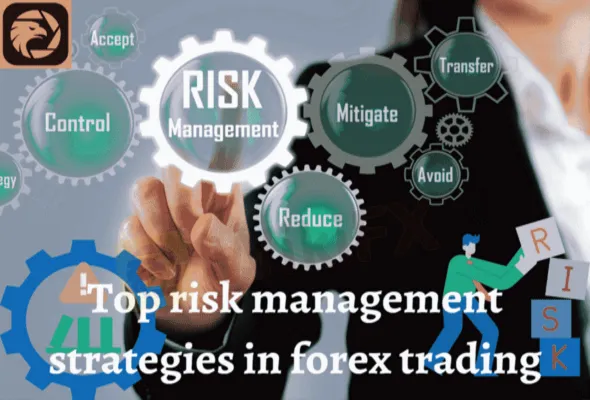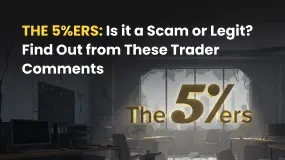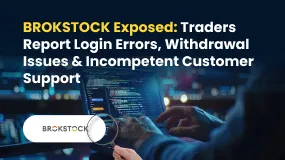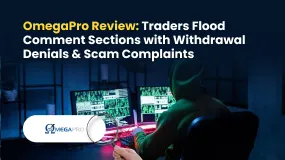简体中文
繁體中文
English
Pусский
日本語
ภาษาไทย
Tiếng Việt
Bahasa Indonesia
Español
हिन्दी
Filippiiniläinen
Français
Deutsch
Português
Türkçe
한국어
العربية
Top risk management strategies in forex trading
Abstract:Volatility within the FX market presents a range of opportunities for profit, but this also comes with added risk. Learn about the risks associated with forex trading, and find out how to manage them.

Forex risk management enables you to implement a set of rules and measures to ensure any negative impact of a forex trade is manageable. An effective strategy requires proper planning from the outset, since its better to have a risk management plan in place before you actually start trading.
What are the risks of forex trading?
Currency risk is the risk associated with the fluctuation of currency prices, making it more or less expensive to buy foreign assets
Interest rate risk is the risk related to the sudden increase or decrease of interest rates, which affects volatility. Interest rate changes affect FX prices because the level of spending and investment across an economy will increase or decrease, depending on the direction of the rate change
Liquidity risk is the risk that you cant buy or sell an asset quickly enough to prevent a loss. Even though forex is a highly liquid market, there can be periods of illiquidity – depending on the currency and government policies around foreign exchange
Leverage risk is the risk of magnified losses when trading on margin. Because the initial outlay is smaller than the value of the FX trade, its easy to forget the amount of capital you are putting at risk
How to manage risk in forex trading
Understand the forex market
Get a grasp on leverage
Build a good trading plan
Set a risk-reward ratio
Use stops and limits
Manage your emotions
Keep an eye on news and events
Start with a demo account
Understand the forex market
The forex market is made up of currencies from all over the world, such as GBP, USD, JPY, AUD, CHF and ZAR. Forex – also known as foreign exchange or FX – is primarily driven by the forces of supply and demand.
Forex trading works like any other exchange where you are buying one asset using a currency – and the market price tells you how much of one currency you need to spend in order to buy another.
The first currency that appears in a forex pair quotation is called the base currency, and the second is called the quote currency. The price displayed on a chart will always be the quote currency – it represents the amount of the quote currency you will need to spend in order to purchase one unit of the base currency. For example, if the GBP/USD currency exchange rate is 1.25000, it means youd have to spend $1.25 to buy £1.
There are three different types of forex market:
Spot market: the physical exchange of a currency pair takes place at the exact point the trade is settled – ie ‘on the spot’
Forward market: a contract is agreed to buy or sell a set amount of a currency at a specified price, at a set date in the future or within a range of future dates
Futures market: a contract is agreed to buy or sell a set amount of a currency at a set price and date in the future. Unlike forwards, a futures contract is legally binding
Get a grasp on leverage
When you speculate on forex price movements with CFDs, you will be trading on leverage. This enables you to get full market exposure from a small initial deposit – known as margin.
While trading on leverage has its benefits, there are also potential downsides – such as the possibility of magnified losses.
Lets say you decide to trade GBP/USD using CFDs, and the pair is trading at $1.22485, with a buy price of $1.22490 and a sell price of $1.22480. You think that the pound is set to gain value against the US dollar, so you decide to buy a mini GBP/USD contract at $1.22490.
In this case, buying a single mini GBP/USD CFD is the equivalent of trading £10,000 for $12,249. You decide to buy three CFDs, giving you a total position size of $36,747 (£30,000). However, because youre trading the forex pair using leverage, your margin will be 3.33%, which is $1223.67 (£990).

Learn more about leverage
Build a good trading plan
A trading plan can help make your FX trading easier by acting as your personal decision-making tool. It can also help you maintain discipline in the volatile forex market. The purpose of this plan is to answer important questions, such as what, when, why, and how much to trade.
It is extremely important for your forex trading plan to be personal to you. It's no good copying someone else's plan, because that person will very likely have different goals, attitudes and ideas. They will also almost certainly have a different amount of time and money to dedicate to trading.
A trading diary is another tool you can use to keep record of everything that happens when you trade – from your entry and exit points, to your emotional state at the time.
Learn how to create a successful trading plan
Set a risk-reward ratio
In every trade, the risk you take with your capital should be worthwhile. Ideally, you want your profit to outweigh your losses – making money in the long run, even if you lose on individual trades. As part of your forex trading plan, you should set your risk-reward ratio to quantify the worth of a trade.
To find the ratio, compare the amount of money you're risking on an FX trade to the potential gain. For example, if the maximum potential loss (risk) on a trade is £200 and the maximum potential gain is £600, the risk-reward ratio is 1:3. So, if you placed ten trades using this ratio and were successful on just three of them, you would have made £400, despite only being right 30% of the time.

Use stops and limits
Because the forex market is particularly volatile, it is very important to decide on the entry and exit points of your trade before you open a position. You can do this using various stops and limits:
Normal stops will close your position automatically if the market moves against you. However, there is no guarantee against slippage
Guaranteed stops will always be closed out at exactly the price you specified, eliminating the risk of slippage1
Trailing stops will follow positive price movements and close your position if the market moves against you
Limit orders will follow your profit target and close your position when the price hits your chosen level
Manage your emotions
Volatility in the FX market can also wreak havoc on your emotions – and if there's one key component that affects the success of every trade you make, its you. Emotions such as fear, greed, temptation, doubt and anxiety could either entice you to trade or cloud your judgment. Either way, if your feelings get in the way of your decision-making, it could harm the outcome of your trades.
Keep an eye on news and events
Making predictions about the price movements of currency pairs can be difficult, as there are many factors that could cause the market to fluctuate. To make sure youre not caught off guard, keep an eye on central bank decisions and announcements, political news and market sentiment.
Start with a demo account
Our demo account aims to recreate the experience of ‘real’ trading as closely as possible, enabling you to get a feel for how the forex market works. The main difference between a demo and a live account is that with a demo, you wont lose any real money – meaning you can build your trading confidence in a risk-free environment.
When you open a demo account with us, youll get immediate access to a version of our online platform, along with £10,000 in virtual funds.
Forex risk management in summary
If you have a particularly effective risk management strategy, you will have greater control over your profits and losses. We offer a wide variety of tools to help you get geared for success. These include the educational resources at IG Academy, free webinars and seminars, a demo account option, forex trade ideas, and much more.

Disclaimer:
The views in this article only represent the author's personal views, and do not constitute investment advice on this platform. This platform does not guarantee the accuracy, completeness and timeliness of the information in the article, and will not be liable for any loss caused by the use of or reliance on the information in the article.
Read more

WikiEXPO Dubai 2025 Concludes Successfully — Shaping a Transparent, Innovative Future
On November 11, WikiEXPO Dubai 2025, hosted by WikiGlobal and co-organized by WikiFX, successfully concluded. As one of the world’s most influential Fintech expos, this event brought together more than 570 regulatory representatives, industry leaders, and innovation pioneers from across the globe. Through in-depth discussions on core issues such as regulatory compliance, the forex market, investment strategies, and sustainable finance, the event delivered a profound experience that masterfully blended intellectual depth with actionable insights.

The 5%ers Review: Is it a Scam or Legit? Find Out from These Trader Comments
Did you face reduced leverage and hiked fees without any explanation from The 5%ers broker? Do you find The 5%er rules strange for getting a funded account from this prop trading firm? Has the broker closed your trade inappropriately, preventing you from making gains in the forex market? All these allegations have dominated The 5%ers review segment online. Looking at this, the WikiFX team investigated and found some startling comments against the broker. In this article, we have shared those complaints. Read on!

BROKSTOCK Exposed: Traders Report Login Errors, Withdrawal Issues & Incompetent Customer Support
Is your BROKSTOCK trading account full of inefficiencies? Do the recurrent BROKSTOCK login errors prevent you from opening and shorting positions at a favorable price? Has the broker failed to honor your withdrawal requests? Do you face order execution price issues? Has the customer support service failed to resolve your queries? You are not alone! In this BROKSTOCK review article, we have shared some complaints that need a close introspection. Read on to explore them.

OmegaPro Review: Traders Flood Comment Sections with Withdrawal Denials & Scam Complaints
Has your deposit and withdrawal scenario worsened after the initial good experience at OmegaPro, a UK-based forex broker? Does the broker ask you to invest when withdrawing your funds? Did the broker officials trap you with their false promises of compound interest on your deposit? Have you found it impossible to transfer funds from your OmegaPro login to another broker’s account? Do you witness a lack of support when dealing with these unfortunate trading circumstances? These are no longer isolated complaints — they have allegedly become the reason for OmegaPro’s tarnished trust and reputation within the trading community. Read on as we share the OmegaPro review in this article.
WikiFX Broker
Latest News
Forex Expert Recruitment Event – Sharing Insights, Building Rewards
Admirals Cancels UAE License as Part of Global Restructuring
Moomoo Singapore Opens Investor Boutiques to Strengthen Community
OmegaPro Review: Traders Flood Comment Sections with Withdrawal Denials & Scam Complaints
An Unbiased Review of INZO Broker for Indian Traders: What You Must Know
Is Fyntura a Regulated Broker? A Complete 2025 Broker Review
PINAKINE Broker India Review 2025: A Complete Guide to Safety and Services
Is Inzo Broker Safe or a Scam? An Evidence-Based Analysis for Traders
Is Uniglobe Markets Legit? A 2025 Simple Guide to Its Safety, Services, and User Warnings
Is Forex Zone Trading Regulated and Licensed?
Currency Calculator



